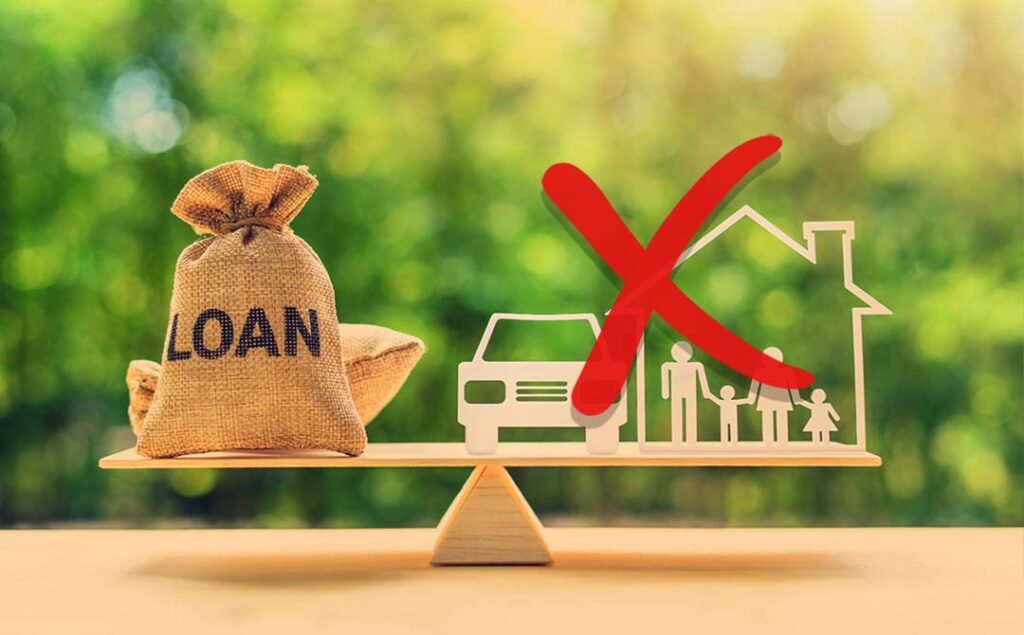Let Your Money Earn
- info@finoda.in
- +91 9035 29 4343
We may not always have the money we require to do certain things or to buy certain things. In such situations, individuals and businesses/firms/institutions go for the option of borrowing money from lenders.
When a lender gives money to an individual or entity with a certain guarantee or based on trust that the recipient will repay the borrowed money with certain added benefits, such as an interest rate, the process is called lending or taking a loan.
A loan has three components – principal or the borrowed amount, rate of interest and tenure or duration for which the loan is availed.
Most of us prefer borrowing money from a bank or a trusted non-banking financing company (NBFC) as they are bound to the government policies and are trustworthy. Lending is one of the primary financial products of any bank or NBFC (Non-Banking Financial Company) offers.

Home loans are dedicated to receiving funds in order to purchase a house/flat, construct a house, renovate/repair an existing house, or purchase a plot for the construction of a house/flats. In this case, the property will be held by the lender and the ownership will be transferred to the rightful owner upon completion of repayments.
These loans require the borrower to pledge collateral for the money being borrowed. In case the borrower is unable to repay the loan, the bank reserves the right to utilise the pledged collateral to recover the pending payment. The interest rate for such loans is much lower as compared to unsecured loans.
Secured loans, on the other hand, require collateral to borrow. In some cases, the collateral for a secured loan may be the asset you’re using the money to purchase. If you’re getting a mortgage for a home, for example, the loan is secured by the property you’re buying. The same would be true with a car loan.


Unsecured loans are those that do not require any collateral for loan disbursement. The bank analyses the past relationship with the borrower, the credit score, and other factors like your default history, your current income levels, and your debt-to-income ratio.to determine whether the loan should be given or not. The interest rate for such loans can be higher as there is no way to recover the loan amount if the borrower defaults. Based on this assessment, a lender will decide whether to approve or reject your application. Also, based on your credit profile, the lender will decide the interest rate for your loan.
Education loans are financing instruments that aid the borrower pursue education. The course can either be an undergraduate degree, a postgraduate degree, or any other diploma/certification course from a reputed institution/university. You must have the admission pass provided by the institution to get the financing. The financing is available both for domestic and international courses.


Whenever there is a liquidity issue, you can go for a personal loan. The purpose of taking a personal loan can be anything from repaying an old debt, going on vacation, funding for the downpayment of a house/car, and medical emergency to purchasing big-ticket furniture or gadgets. Personal loans are offered based on the applicant’s past relationship with the lender and credit score.
Vehicle loans finance the purchase of two-wheeler and four-wheeler vehicles. Further, the four-wheeled vehicle can be a new one or a used one. Based on the on-road price of the vehicle, the loan amount will be determined by the lender. You may have to get ready with a downpayment to get the vehicle as the loan rarely provides 100% financing.


Many financiers and lenders offer cash when the borrower pledges physical gold, may it be jewellery or gold bars/coins. The lender weighs the gold and calculates the amount offered based on several checks of purity and other things. The money can be utilised for any purpose.
Similar to pledging gold, individuals and businesses pledge property, insurance policies, FD certificates, mutual funds, shares, bonds, and other assets in order to borrow money. Based on the value of the pledged assets, the lender will offer a loan with some margin at hand.

Credit score plays an important role in deciding whether the lender would like to go ahead with your application or drop it off at the initial stage. This is especially the case when it comes to unsecured loans.
Since a credit score represents the credit history of the borrower, the lender analyses the repayment history of the borrower and concludes whether the borrower can repay on time or will he default on payments. The loan approval is based on the lender’s judgement after the necessary analysis.
Your monthly or annual income and employment history plays a crucial role in loan approval as well. Based on your income and income stability in the form of consistent and stable work history, the lender may or may not get convinced that you will be able to repay the loan.
Even if you are self-employed, the lender assumes that your business is running well for the past few years and your business’s turnover is satisfactory.
Not just having a good income, your debt-to-income ratio is also important. In case you have an income of Rs.1 lakh per month and if your debt repayment commitments exceed Rs.75,000 already, a new loan will not be provided to you as you will need the remaining income to take care of your domestic expenses.
Therefore, irrespective of your income, you must have a low debt-to-income ratio so the lenders can think that you have enough cash at hand every month to make the repayments as well as handle the family expenses.
Based on the collateral you provide and its current market value, the lender may decide on the interest rate applicable to your loan. Providing collateral will make the deal more secure from the lender’s perspective, which may result in more trust and less interest rate. An unsecured loan is infamous as it includes a higher interest rate comparatively.
The money you have saved and the effective execution of your saving plan towards a down payment will increase the lender’s trust in you. The higher the down payment, the lower is the loan amount requirement.